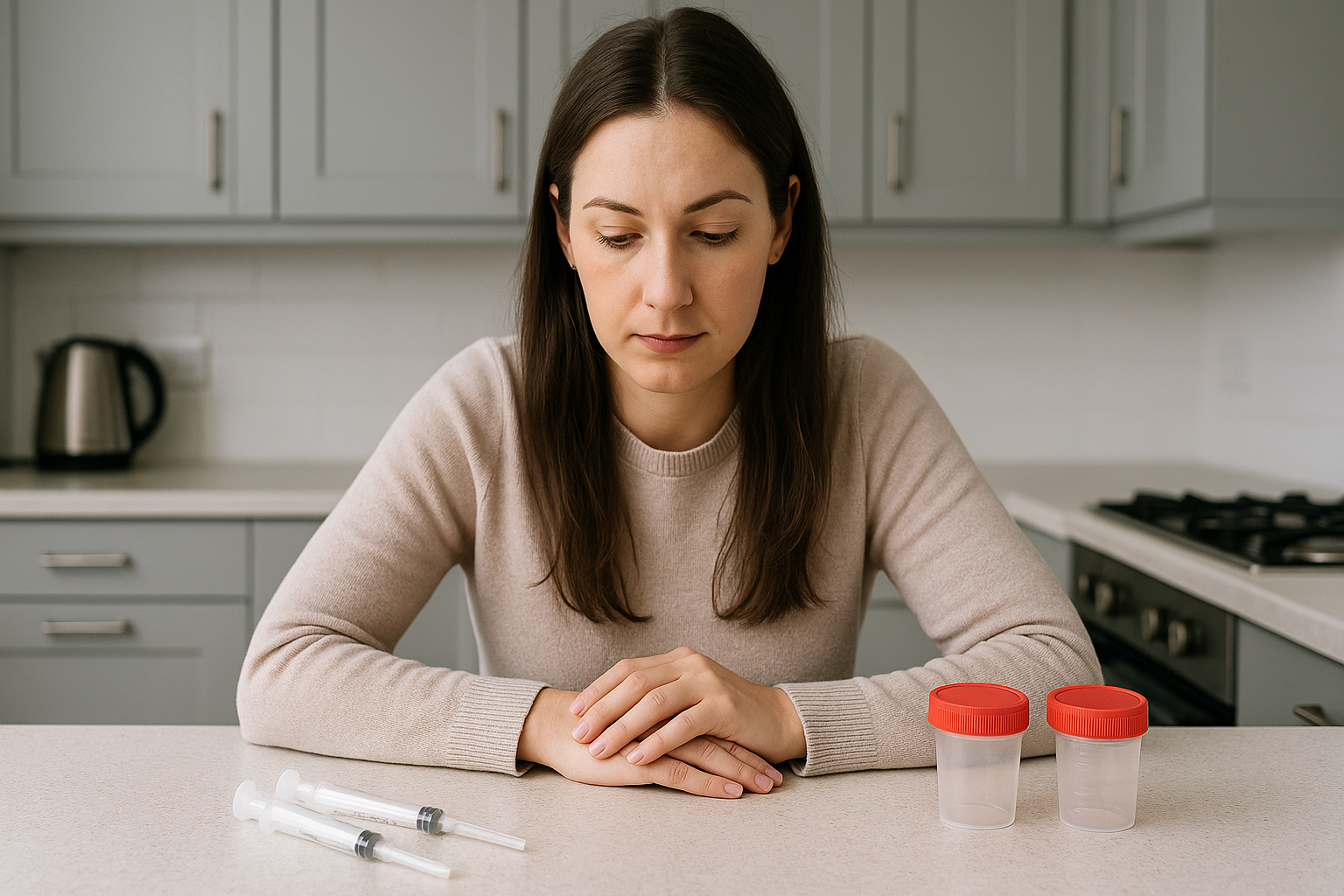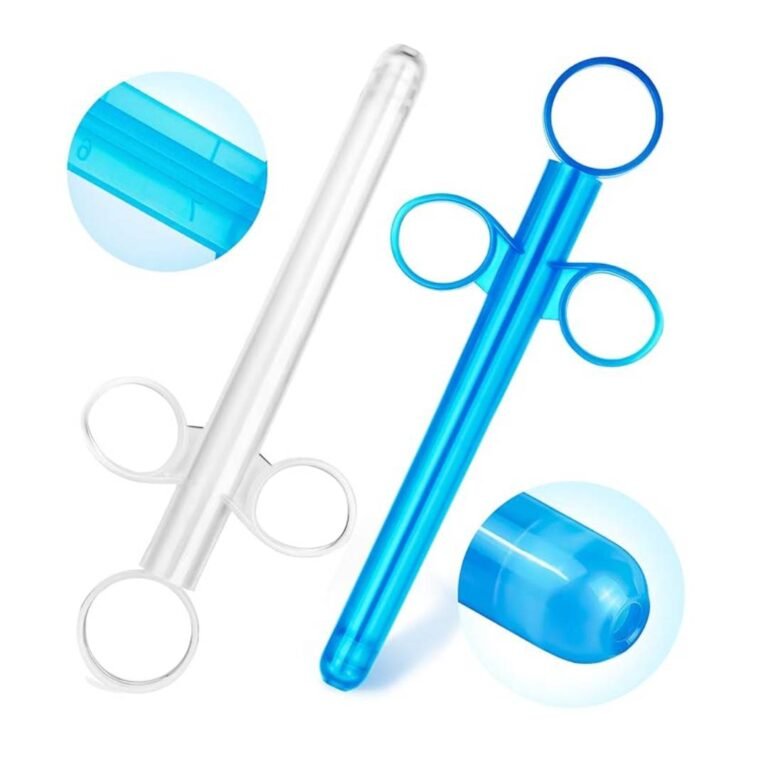At home insemination is becoming more common. Many women are choosing this method because it’s private, affordable, and gives them more control. You don’t need to visit a clinic or spend thousands. You just need the right tools, good timing, and a little guidance.
That’s where an at home insemination kit comes in.
What Is an At Home Insemination Kit?
An at home insemination kit is a group of simple tools you use to place sperm into the vagina. No doctor, no medical setting, and no sexual contact are involved. The process is done in your own space, on your own schedule.
The kit is designed to help you do everything safely and cleanly. It’s made for comfort, ease, and results.
If you’re new to at home insemination, this is one of the easiest ways to start.
What Comes in a Typical Kit?
Most kits include:
- One or two syringes (needle-free) to insert the sperm
- One or two specimen cups for collection
Not all kits are the same. Some include extras. Some cut corners. That’s why it helps to know what each tool does and what to look for.
How Each Tool Works
- Syringe: Used to gently insert the sperm near the cervix.
- Specimen cup: Used to collect sperm from the donor.
Using the Kit Step by Step

- Collect the sperm in the sterile cup.
- Let it sit at room temperature for 15 minutes to liquefy.
- Draw the sperm into the syringe.
- Lie down and insert the syringe gently into your vagina.
- Slowly push the plunger.
- Stay lying down for 30 minutes.
It helps to be calm and in a quiet place. Some women like soft music or dim lighting to stay relaxed.
Why Women Choose At Home Insemination Kits
These kits are used by single women, same-sex couples, and others who want more control. They’re also chosen by those who want to avoid the high cost of fertility clinics.
At home insemination lets you do this in your own way. There are no waiting rooms. No rushed appointments. Just your body, your plan, and your comfort.
You can read more about how at home insemination works in this simple guide.
How Much Do Kits Cost?

Prices vary a lot. Here’s a quick look:
- DIY Kit (recommended tools): About $15
- Mosie Baby Kit: Around $129
Some higher-cost kits include fewer tools. For example, Mosie Baby includes 2 syringes and 2 specimen cups.
If you’re watching your budget, a DIY kit with medical-grade tools can work just as well for a fraction of the price. You can learn where to find them in the home insemination guide.
What to Look for in a Good Kit
Not every kit is equal. Here are signs of a good one:
- Medical-grade syringes
- Non-toxic plastic
- Sterile sample cups
Avoid any kits that use scented or regular lube. These can damage sperm. The tools should be new, sealed, and easy to use.
DIY Kits vs. Name-Brand Kits
If you’re on a tight budget, a do-it-yourself kit is often the best option. It gives you the same basic tools without the fancy packaging.
Branded kits like Mosie Baby offer sleek designs, but the purpose is the same: get the sperm close to the cervix.
Here’s a quick comparison:
DIY Kit
• Syringes: 2
• Cups: 10
• Extras: None
• Price: ~$15
Mosie Baby
• Syringes: 2
• Cups: 2
• Extras: None
• Price: ~$129
With a DIY kit, you can also choose better quantities for your needs.
When to Use the Kit
Timing is key. Use ovulation test strips to track your cycle. When you see your LH surge, plan to inseminate within 12 to 24 hours.
This is when your chances are highest. Some women inseminate twice over two days. That can increase the odds.
Mistakes to Avoid
- Inseminating too early or too late
- Not letting sperm liquefy first
- Using the wrong kind of lube
- Reusing a syringe or cup
- Not relaxing your body before inserting
Also, don’t stand up right after. Give the sperm time to stay near the cervix.
Can You Reuse the Kit?

No. The tools are meant for one use only. Syringes and cups should be clean and sterile. Even washing them isn’t enough. It’s not worth risking an infection or harming the sperm.
The good news is, if you go the DIY route, the supplies are affordable enough to use fresh ones each time.
What Research Says About Home Insemination
At home insemination is more than just a budget-friendly option—it’s also supported by science. Several studies have shown that this method can be effective and empowering, especially when done correctly.
One randomized study compared six cycles of home insemination using thawed donor sperm with clinic-based insemination. The results showed similar pregnancy rates—13 out of 29 women who did home insemination became pregnant, compared to 11 out of 24 in the clinic group (PubMed study). This means that for some, staying home might be just as successful as going to a fertility clinic.
Another study looked at couples with unconsummated marriages—meaning they had not had intercourse due to conditions like vaginismus or erectile dysfunction. After six cycles of home intravaginal insemination, the clinical pregnancy rate was 69% for women aged 20–33, 43% for women aged 33–36, and 25% for those over 36 (PubMed study). These results show that even without traditional sex, home insemination helped many couples conceive.
A third study focused on men with spinal cord injuries. Using vibratory stimulation to collect sperm, their partners performed home insemination with positive outcomes. This method proved both affordable and successful for selected couples (PubMed study).
These findings offer real support for women considering at home insemination kits. When used correctly, these kits can be part of a safe and effective plan to grow your family—without the cost or stress of a clinic.
Where to Learn More
The home insemination guide gives you more than just the basics. Inside, you’ll learn:
- Where to get medical-grade tools
- How to save money
- How to track ovulation
- What to do after insemination
- How to reduce stress during the process
It’s written to be easy, clear, and helpful—even for women doing this for the first time.
Final Thoughts
An at home insemination kit gives you freedom. You don’t need to spend hundreds or go to a clinic to start your path to pregnancy.
Choose your tools wisely. Stick with clean, simple steps. Focus on timing, comfort, and peace of mind.
Whether you buy a kit or build your own, what matters most is that it works for you.
You have options. You have support. And you have the power to do this your way.


